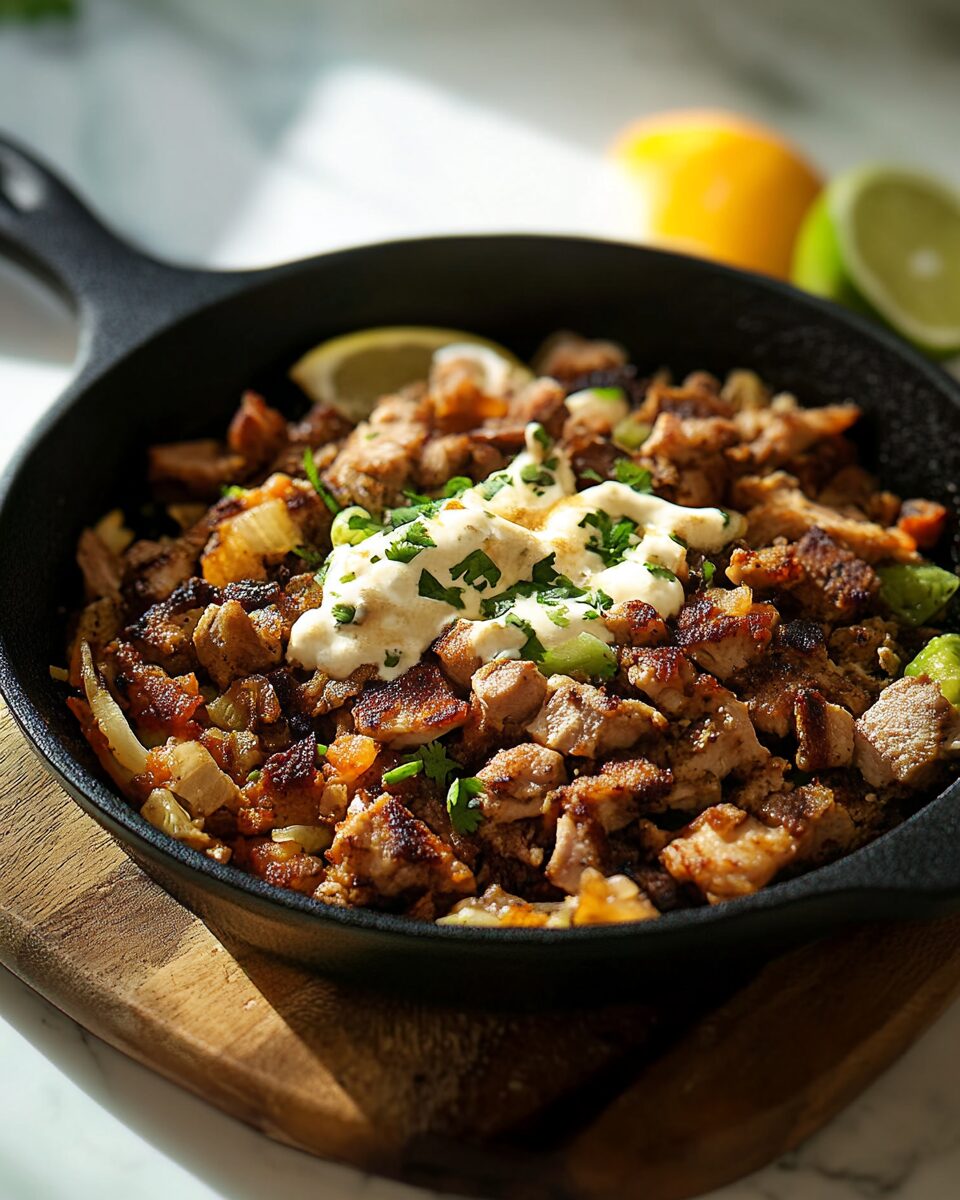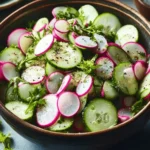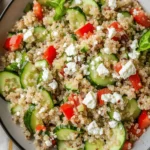This Chicken Sisig recipe offers a delightful twist on the classic Filipino dish, traditionally made with pork. By using boneless chicken thighs, this version provides a lighter yet equally flavorful experience.
FULL RECIPE:
Ingredients
- For the Chicken:
- 8-10 pieces boneless chicken thighs (with skin; omit skin for a healthier alternative)
- 8-10 pieces chicken skin (for chicharron)
2. Marinade:
- 3 tablespoons annatto oil (optional)
- 1 stalk lemongrass (white part only), minced
- ½ red onion, minced
- 2 garlic cloves, smashed
- 1 tablespoon sweetener (white sugar)
- ¼ cup vinegar (Datu Puti brand)
- ¼ cup soy sauce
- 2 tablespoons fish sauce
- 1 teaspoon salt
- 1 teaspoon pepper
3. Vinegar Dressing:
- 3 tablespoons vinegar (Datu Puti brand)
- 3 tablespoons soy sauce
- ½ red onion, minced
- Pepper, to taste
4. Garnish:
- 1 egg
- 1 tablespoon red onion, minced
- Spring onions, chopped
- Bird’s eye chili, sliced (optional)
- Lime wedges
Directions
- Marinate the Chicken:
In a large bowl, combine annatto oil, lemongrass, ½ minced red onion, smashed garlic cloves, vinegar, soy sauce, fish sauce, sugar, salt, and pepper. Add the chicken thighs to the marinade, ensuring they are well-coated. Cover the bowl and refrigerate for at least 30 minutes, preferably overnight for enhanced flavor. - Grill the Chicken:
Preheat a grill or grill pan over medium heat. Remove the chicken from the marinade and grill until fully cooked, approximately 10 minutes, flipping occasionally for even cooking and color. Once cooked, transfer the chicken to a cutting board and let it cool slightly before chopping into small pieces. - Prepare the Chicken Chicharron:
Preheat the oven to 425°F (220°C). Line a baking tray with parchment paper and place a cookie cooling rack on top. Pat the chicken skins dry with a paper towel and lay them flat on the rack in a single layer without overlapping. Bake for 15-20 minutes until the skins are golden brown and crispy. For extra crispiness, broil for an additional 1-2 minutes. Remove from the oven and let them cool for 2 minutes before transferring to a plate. - Assemble the Sisig:
In a bowl, combine the chopped grilled chicken with the vinegar dressing (vinegar, soy sauce, minced red onion, and pepper). Mix well. Transfer the mixture to a sizzling plate or cast-iron skillet. Set the oven to broil and place the skillet in the oven for about 5 minutes, or until the chicken becomes crispy and some of the liquid has evaporated. - Garnish and Serve:
Remove the skillet from the oven and crack an egg on top of the sizzling chicken. The residual heat will cook the egg, creating a creamy sauce. Sprinkle with minced red onion, chopped spring onions, and sliced bird’s eye chili if desired. Top with the prepared chicken chicharron for added crunch. Serve immediately with lime wedges on the side.
Nutrition Facts
- Calories: 412 kcal
- Total Fat: 29 g
- Saturated Fat: 9 g
- Cholesterol: 118 mg
- Sodium: 941 mg
- Total Carbohydrates: 12 g
- Dietary Fiber: 1 g
- Sugars: 2 g
- Protein: 24 g
- Calcium: 35 mg
- Iron: 2.4 mg
- Potassium: 353 mg
The Origins and Popularity of Sisig
Sisig is one of the most iconic dishes in Filipino cuisine, known for its rich, tangy, and savory flavors. Traditionally, it was made from parts of a pig’s head and liver, chopped and mixed with a combination of vinegar, calamansi juice, onions, and chili peppers. This dish originated in Pampanga, a province in the Philippines famous for its exceptional culinary traditions. The name “sisig” is derived from the Kapampangan term meaning “to snack on something sour.”
Why Choose Chicken Sisig Over Pork?
One of the main reasons many people opt for chicken sisig instead of pork is the health factor. Pork sisig, while delicious, is high in fat and cholesterol, especially when using pig’s face and other fatty cuts. Chicken, particularly boneless thighs, offers a leaner yet flavorful protein source that absorbs marinades well. It retains its tenderness and juiciness after grilling or frying, making it an excellent substitute for pork without compromising texture and taste. Another advantage of using chicken is its availability and accessibility. Chicken is widely consumed across the globe, making this variation of sisig easier to prepare in different regions.
The Unique Role of Chicharron in Chicken Sisig
Chicharron, or crispy chicken skin in this recipe, is an essential component that elevates chicken sisig to a new level. Since pork sisig traditionally contains crispy and chewy bits, the addition of chicharron provides a similar textural contrast. The key to making perfect chicharron is to dry the chicken skin thoroughly before baking or frying. This process ensures that the fat renders out properly, leaving behind a light, crispy texture that adds crunch to every bite. Beyond texture, chicharron enhances the overall flavor of the dish. The rich, slightly smoky taste of crispy chicken skin pairs beautifully with the tangy and savory elements of sisig.
The Importance of Vinegar in Sisig
In chicken sisig, vinegar not only enhances the taste but also helps to mellow out the fattiness from the chicharron and meat. Without vinegar, sisig can become overly rich, making it heavy on the palate. The type of vinegar used can also affect the final flavor. Filipino cane vinegar, such as Datu Puti, is a popular choice because of its sharp yet slightly sweet profile. Some variations may also use calamansi juice, which adds a citrusy brightness that complements the vinegar’s acidity. Aside from its culinary benefits, vinegar has several health advantages.
Variations and Customizations
One of the reasons sisig has remained popular for generations is its versatility. The base recipe for chicken sisig can be adapted to suit different preferences. Those who enjoy spicy food can increase the amount of bird’s eye chili or drizzle chili oil over the dish for an extra kick. Some variations incorporate mayonnaise or evaporated milk to create a creamy texture, making the sisig richer and smoother. Another popular modification is adding cheese. Melted cheese creates a gooey contrast to the crispy chicharron, making the dish even more indulgent.
Best Side Dishes and Pairings
While chicken sisig can be enjoyed on its own, pairing it with the right side dishes enhances the overall dining experience. The most traditional accompaniment is steamed white rice, as its mild flavor helps balance the bold, tangy, and savory notes of the sisig. Garlic fried rice is another excellent choice, adding a fragrant and slightly crispy element to the meal. For those looking to add freshness, grilled vegetables make a great side dish. Their slightly charred and smoky flavors complement the richness of the sisig while providing a nutritious contrast.
Conclusion
Chicken Sisig with Chicharron is a perfect example of how traditional Filipino dishes can be reinvented while preserving their authentic flavors. This version of sisig offers a healthier yet equally delicious alternative to the classic pork variation, making it more accessible to a wider range of people. The combination of tender grilled chicken, tangy vinegar dressing, and crispy chicharron creates a dynamic dish that is satisfying in both taste and texture.






